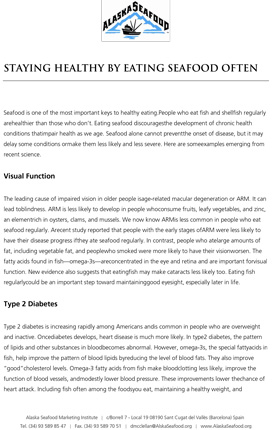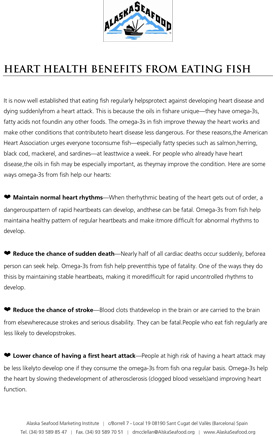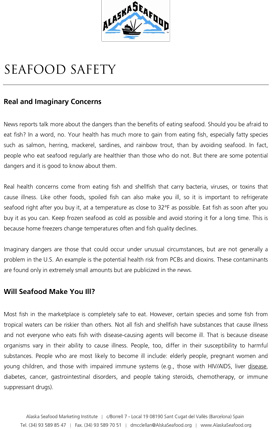It is scientifically proven that vegetable-based diets, such as those of the Mediterranean type, which consist of plant foods (cereals, fruits, vegetables, legumes, nuts and seeds), fish, shellfish, healthy fats and a limited consumption of red meat , are one of the best dietary approaches for preventing chronic diseases and improving overall health through nutrition.
The combination of vegetables and seafood as part of the usual diet creates a synergy of nutrients that fills those nutritional gaps that can occur in poor, sedentary diets …, such as insufficient EPA, DHA, vitamin D and B12, and improves the absorption of essential nutrients that the body needs.
Why consume Alaskan seafood?
High-quality fish and shellfish are considered to be the richest foods in EPA and DHA in the world, like seafood that lives in the waters of Alaska.
Wild Alaskan salmon contains exceptional nutritional properties that help produce serotonin.
THE MAJORITY OF DIETS FOR PREGNANT WOMEN DO NOT PROVIDE THE ADEQUATE AMOUNT OF OMEGA 3 DUE TO THE LOW CONSUMPTION OF FOODS RICH IN THIS FATTY ACID, SUCH AS ALASKA SEAFOOD PRODUCTS
Give preference to fish that are high in EPA and DHA, such as salmon, black cod, oysters, Alaskan flea, and Alaskan pollock. Average daily intake should consist of 250 mg of EPA and DHA per day:










